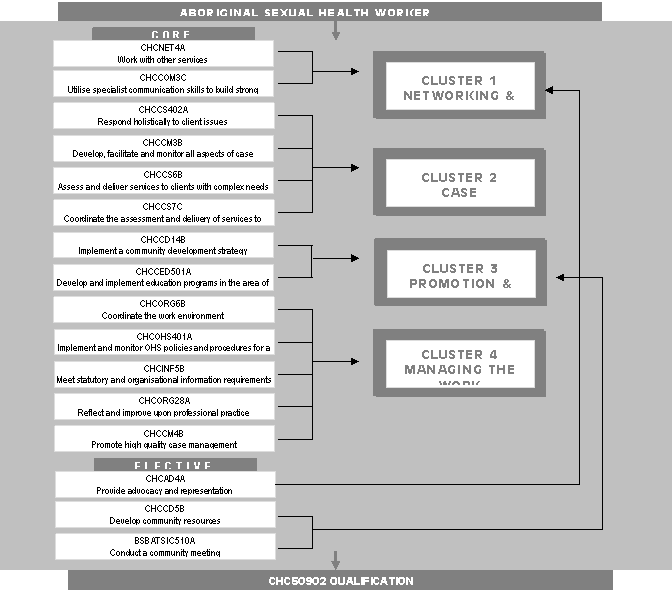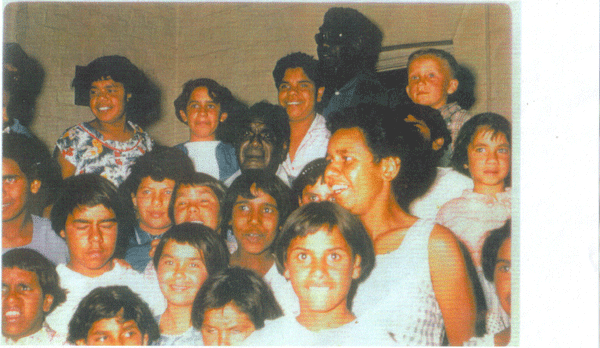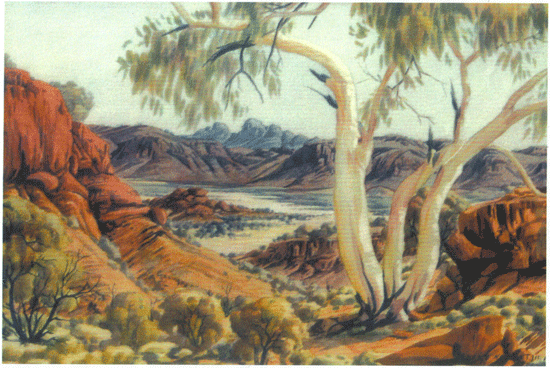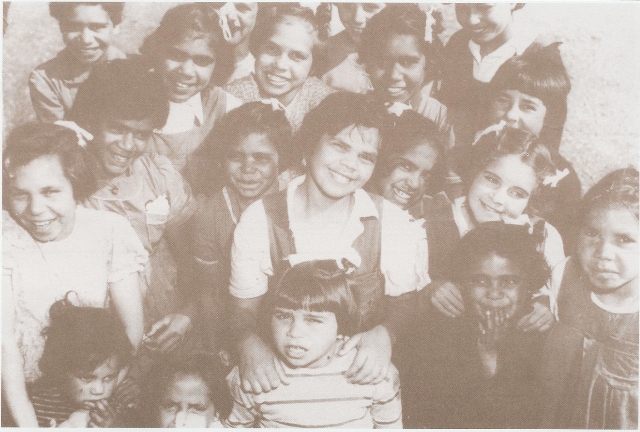Programs and Policy
The AH&MRC is involved in advising on all health related issues affecting Aboriginal people. However, there are a number of areas of particular focus that are especially relevant to assisting delivery of services by ACCHSs. Details of current priority areas and projects are given below.
Alcohol and Other Drugs (AOD)
Alcohol misuse and other drug abuse is one of the most perplexing and difficult issues facing Aboriginal communities within contemporary Australia . Alcohol and other drug abuse cause adverse outcomes for many Aboriginal individuals and communities. In NSW, as in other parts of Australia, there is an ongoing need for targeted programs to address the many social and health consequences of alcohol and other drug abuse.
Centre for Drug & Alcohol
The Centre for Drug & Alcohol in the NSW Health Department and AH&MRC have developed a constructive working partnership. Through this partnership, the Centre for Drug & Alcohol has funded a two-year joint project implemented by AH&MRC throughout 2004-2005.
The Centre’s funding has enabled AH&MRC to employ a full-time Policy Officer as well as a full-time Information Technology (IT) Project Officer. The IT Project Officer is responsible for building the I.T and information management capacity of Aboriginal Community Controlled Health Services (ACCHSs) in relation to drug and alcohol data as well as link the ACCHSs with a drug and alcohol website and resources relevant to their needs.
The AH&MRC full time Policy Officer addresses statewide alcohol and other drug issues. Activities include :
-
Developing a forum to provide opportunities for networking and support between Aboriginal A&OD workers in both Aboriginal Community Controlled Health Services and Area Health Services
-
Advocating on behalf of Aboriginal AOD workers and for Aboriginal AOD services
-
Participating on the NSW Drug Program Council
-
Assisting with the development of the NSW Aboriginal and Torres Strait Islander Drug and Alcohol Plan
-
Supporting Aboriginal AOD workers within ACCHSs
-
Developing a comprehensive directory of relevant AOD services for use by AH&MRC members
-
Assisting AOD workers access information regarding resources, training, forums and conferences etc
-
Ensuring ACCHS AOD staff have access to appropriate information technology, including hardware, internet connections, and training on relevant AOD data and web packages
For more information about other drug and alcohol related services, click here to go to Information Resources.
NSW Aboriginal Drug and Alcohol Network (ADAN)
The establishment of ADAN in May 2003 represents a significant step forward in progressing some of the key recommendations of the draft NSW Aboriginal and Torres Strait Islander Substance Misuse Plan. Bringing together such a significant group of people working in Aboriginal Substance misuse for its inaugural meeting marks a welcome and important consolidation of a partnership in NSW to improve the health of Aboriginal and Torres Strait Islander peoples.
NSW Alcohol Summit
In August 2003 the NSW Government hosted the NSW Summit on Alcohol Abuse 2003. Prior to the Summit, a one-day forum called Talking About Grog was held to give Aboriginal people an opportunity to discuss the particular issues relating to Aboriginal people and alcohol and to identify strategies which were taken to the Summit.
The final Summit communique identified several strategies to meet the needs of Aboriginal communities including:
- supporting Aboriginal communities in reclaiming kinship and culture to unify communities and families
- engaging Aboriginal community leaders to convey a range of messages on alcohol use, other options and interventions to their communities
- supporting locally based and determined approaches
- allocating resources for peer support programs for Aboriginal communities.
The Communiqué is available from this link
Aboriginal Eye Care
The AH&MRC manages an Aboriginal Eye Care Program in partnership with the International Centre for Eye Care Education (ICEE). The Program has established clinics at 70 metropolitan, rural and remote locations.
The Program delivers three levels of service:
- Aboriginal Eye Health Coordinators, trained by the ICEE, conduct screening and educate others in screening techniques, in Aboriginal communities, including in isolated and remote locations.
- People referred from screenings or health services are examined by an optometrist.
- Ophthalmologist services, including ophthalmic surgery, are provided at regional hospitals.
By the end of 2003 approximately 8,000 consultations had been completed and more than 5,000 pairs of spectacles had been issued
Mental Health
The AH&MRC provides advice to NSW Health through the NSW Aboriginal Health Partnership on a range of issues. The AH&MRC has coordinated responses at a state and federal level on state and national mental health policy, youth suicide issues, autopsy protocols, appropriate national instruments for detecting anxiety and depression and contributed to the drafting of the Consultation Paper for the Development of the National Strategic Framework for Aboriginal and Torres Strait Islander Mental Health and Social and Emotional Wellbeing 2004-2009, although the final content of the document does not necessarily reflect the views of the AH&MRC.
The AH&MRC works in partnership with the Centre for Mental Health in the NSW Health Department, addressing project areas such as mental health in general; social and emotional well-being; grief, loss and trauma; and youth and suicide prevention.
Specific activities have included:
- the development of resources for the Aboriginal community in relation to youth suicide and care and support;
- developing health promotion publications aimed at Aboriginal youth;
- assistance with reviewing and implementing the NSW Aboriginal Mental Health Strategy; and,
- developing a video on grief, loss and trauma issues in relation to the Stolen Generations.
- developing appropriate instruments in gauging anxiety, depression and repressed anger in the Aboriginal community.
Policy Contributions
AH&MRC has submitted for two full-time Policy Officer positions to commence early in 2005. One Policy Officer will review the Mental Health Outcomes Assessment Tool. The other Policy officer will advocate for member Services on mental health issues.
Sexual Health and Blood Borne Infections
Policy and Program Contributions
AH&MRC has an active role in policy development and program improvement in Sexual health. For example:
-
AH&MRC was instrumental in providing advice on the development of the NSW Implementation Plan for Aboriginal and Torres Strait Islander Sexual Health , through its representation on the NSW Working Group.
-
The AH&MRC will soon be conducting multidisciplinary education workshops across NSW with a focus on Sexual Health. These workshops will be comprehensive and facilitated by both staff from the AH&MRC and local staff. If you are interested in hosting a sexual health workshop in your area please click here
-
Funding from the Office of Aboriginal and Torres Strait Islander Health suppo rted a project to address issues relating to education and prevention, early detection, treatment, care and management of sexually transmitted diseases.
-
Currently the AH&MRC are working in collaboration with the National Centre in HIV Social Research at the UNSW to conduct a series of research workshops with an overall objective of increasing Aboriginal Health Workers capacity to conduct research within their own communities.
-
The AH&MRC Consultancy Service has recently published a report addressing access issues to health services with a focus on Blood Borne Infections HIV, hepatitis C and B . This report is available by clicking here.
-
AH&MRC has also conducted rural and regional workshops across NSW on Aboriginal Sexual Health, involving HIV and a hep C positive speakers.
- Ongoing professional training is also conducted, often in conjunction with other organisations. For example, the AH&MRC and the Australian Society for HIV Medicine convened A Day Course in Aboriginal Sexual Health Managing HIV and STDs , to doctors and other health workers, on 25 June 2004. For further information click here.
Aboriginal Sexual Health Advisory Committee
The Aboriginal Sexual Health Advisory Committee (ASHAC) provides advice at a statewide level ensuring the goals and objectives of the National Indigenous Australians Sexual Health Strategy are implemented throughout NSW. The terms of reference for ASHAC are;
-
to provide advice on the implementation of the National Indigenous Australian Sexual Health Strategy and related issues in NSW;
-
to ensure transparency of sexual health programs and resources provided for Indigenous Australians in NSW;
-
to ensure transparency of research and ethical practices provided for Indigenous Australians in NSW;
-
to provide advice on the development of statewide education resources;
-
to provide a forum for the interests of target populations and key stakeholders to be tabled;
-
to advocate for the Network of Aboriginal and Torres Strait Islander Sexual Health Workers in NSW;
-
to provide feedback and advice to relevant NSW and Commonwealth committees;
-
to provide feedback and advice to the NSW Aboriginal Health Partnership;
-
to ensure that sexual health is placed within the context of broader Aboriginal Health, through cross government initiatives and by increasing the profile of sexual health as a priority across Aboriginal Health.
-
Decisions regarding funding are not within the jurisdiction of this committee.
Membership of ASHAC is multidisciplinary and members meet quarterly. Please click here to request further information.
Diploma Course
A Diploma of Community Services (Case Management) with a focus on Aboriginal Sexual Health is offered through the AH&MRC Aboriginal Health College. The Course was thoroughly reviewed and enhanced during 2004 and received accreditation from the Vocational Education and Training Accreditation Board (VETAB) of NSW as part of the accreditation of AH&MRC as a Registered Training Organisation. Financial support for the Course review and enhancement was provided by the the AIDS and Infectious Disease Branch of the NSW Health Department, which has a productive working partnership with the AH&MRC.
The Sexual Health Branch also funds the full-time position of Course Coordinator within the AH&MRC. The Course is delivered through distance education and, early in 2005, the AH&MRC web site will be enabled to provide secure access between Course participants and the Course Coordinator.
The competency-based Course was regarded as “gold standard” in distance education at the time of AH&MRC RTO accreditation. The Course was developed specifically with Aboriginal community structures, students and their learning needs and environments in mind.
The following is an overview of the Diploma course.

For further information click here.
Hepatitis C
The AH&MRC works in partnership with the Hepatitis C Council of NSW to:
-
increase resourcing and funding for projects related to hepatitis C in Aboriginal communities and workforces in metropolitan, rural and regional NSW areas;
-
raise awareness in Aboriginal health, hepatitis C and related sectors of the impact of hepatitis C on Aboriginal communities’ health and social needs;
-
exchange relevant information on national and state level strategies and policies that may impact on Aboriginal people affected by hepatitis C or at risk of contracting hepatitis C; and
-
enhance the capacity of the Aboriginal and non Aboriginal health and community workforce to provide skilled, knowledgeable, holistic and non judgmental services to Aboriginal people affected by hepatitis C.
Specific strategies to achieve these aims are outlined in a Memorandum of Understanding between the AH&MRC and the Hepatitis C Council.
Recent activities of AH&MRC include:
-
Production and release of a major Report on blood-borne infections
-
Conducting 15 rural and regional workshops across the State in conjunction with the Hepatitis-C Council of NSW, involving a Hepatitis-C positive speaker
-
Representation on the Ministerial Advisory Committee on Hepatitis-C
- Soon to be released “Hepatitis-C and Us Mob” education booklet
-
Blood borne virus workshop: An update for Aboriginal health workers, more
Hepatitis C Workforce Development Project
The new Hepatitis C Workforce Development Project at the AHMRC aims to assist the Aboriginal workforce to respond to the hepatitis C epidemic through resource development, education sessions for workers and community members and supporting a range of other prevention activities. For more information, click here
Men's Health
An Aboriginal Men's Health Implementation Plan was developed in partnership between NSW Health, the Aboriginal community controlled health sector and other relevant bodies and released in 2003, based on the principles of an earlier document, Moving Forward in Men's Health 1999, and to supplement the overall NSW Aboriginal Health Strategic Plan 1999.
The Implementation Plan was developed collaboratively by the AH&MRC, NSW Health, the NSW Department of Aboriginal Affairs, Corrections Health Service and NSW Aboriginal communities. This plan for improving the health of Aboriginal men is the first of its kind in Australia.
The key focus of the Implementation Plan is to make health services more accessible and appropriate to Aboriginal men by:
- Developing supportive environments;
- Improving collaboration and coordination of services;
- Pursuing quality research and information; and
- Developing and training the health workforce.
A copy of the Implementation Plan can be downloaded by clicking here.
A recommendation from the Implementation Plan was to place a designated Aboriginal Men's Health Project Officer in the AH&MRC. In 2004 the Project Officer was recruited. The Project Officer’s key role is to contribute to improving the health and well-being of Aboriginal men living in NSW by:
- increasing their access to services;
- assisting in the establishment of Aboriginal men's groups in areas across NSW;
- identifying positive programs/projects and services catering for Aboriginal men; and
- networking existing Aboriginal men's groups in NSW.
Activities during 2004 focused on:
- Compiling a Directory of existing and planned Aboriginal Men’s Groups in NSW
- Networking the existing Aboriginal Men’s Groups
- Developing an evaluation pro forma for Aboriginal Men’s Groups
Developing a needs assessment tool for communities and groups interested in establishing Aboriginal Men’s Groups.
Stolen Generations
The AH&MRC is committed to providing assistance and support to the Stolen Generations of Aboriginal people throughout Australia and in particular within the State of NSW. This passage of Australian history reflects a tragic intrusion into Aboriginal societal and familial structures with the majority of Aboriginal families still seriously affected through the taking away of children from their parents, siblings, Communities and country. The Stolen Generations Link Up NSW organisation has defined the Stolen Generations as follows:
“Stolen Generations” means a person of Aboriginal descent who was taken as a ward or otherwise forcibly separated and alienated from family, Community and Country as a result of government assimilation policy, racism or prejudicial action and/or those Aboriginal persons fostered, adopted or institutionalised under duress including intergenerational family members so affected.
It is important that the AH&MRC has a dedicated Policy Officer assigned to work with Aboriginal communities and agencies to facilitate programs that work towards redressing the deleterious impact of the Stolen Generations upon their lives, families and Communities.
A vital Aboriginal organisation that was established by and for members of the Stolen Generations is Link Up NSW which became an associate member of the AH&MRC in 2004.
Link Up NSW is an Aboriginal community controlled organisation that began on a voluntary basis in 1980. The organisation’s dominant objective is to redress the grave injustices, deprivations and incursions into the health and well being of intergenerations of Aboriginal people resultant from the impact of removing Aboriginal people from families, Community and Country. It is a crucial aim and objective of this organisation to foster the integral nature of Aboriginal religious traditions, values, heritage and language in the sustaining or regaining of health and well being in Aboriginal communities.

In May 2004 the AH&MRC, working in partnership with Link Up (NSW) Aboriginal Corporation facilitated a reunification for the former girls of the Cootamundra Aboriginal Girls’ Training Home. It became known as the "Journey to Reclaim Our Childhood”. The Cootamundra Aboriginal Girls’ Training Home was one of the government institutions in New South Wales where Aboriginal children were forcibly taken to from their families from 1912 to 1969 by the Aboriginal Protection Board, later renamed the Aboriginal Welfare Board.

“Standing on our wishing well …wishing for someone to come and take us home”
(Photograph by kind permission of a former resident of Cootamundra Aboriginal Girls Training Home)
The well cap became a quiet place where in solitude or with a sister we would sit and gaze down the driveway to see if family visitors were coming. Over the years Aboriginal Welfare Board representatives and departmental officials took many public relations photographs of the girls sitting on the well. It is the centre sketch of the poster for the “Journey to Reclaim Our Childhood” reunion in May 2004. During this visit to the home many of the girls were dismayed to find that the well had been destroyed, in spite of the building’s heritage listing. At present there is no plaque to commemorate our having passed through this place from 1912 to 1969. Following negotiations it was decided by the girls that a replica should be built to replace the original well. Funds have been made available through the Stolen Generations Memorial Foundation and a stonemason will insert this photograph on both the well cap and a bush boulder. The building is currently occupied by an Aboriginal Bible College

Albert Namatjira with his son Keith, visiting the girls at Cootamundra in December 1956

The Albert Namatjira painting which was officially presented to the girls at the Cootamundra Girls Home in June 1957.
In December 1956, on a visit to eastern Australia the Aboriginal Artist, Albert Namatjira, visited Cootamundra Aboriginal Girls’ Training Home and, moved by the girls’ plight and loneliness, returned home to his country and painted one of his famous water colour paintings entitled “Arreyonga Paddock, James Range” for the girls. The visit was memorable in that it was the first time many of them had seen an Aboriginal man in their young lives since being taken from their families. The painting was officially received and presented to the girls in June 1957 and was hung in the main dormitory. The painting is the only tangible residual item from their childhood that they can reach out and touch.
Following the girls’ request at the reunion in May 2004 the painting is currently in storage until they have made a final decision as to a culturally appropriate permanent location.
The AH&MRC as a registered incorporation agent has recently provided professional assistance to the members of the Stolen Generations in developing an appropriate organisational structure under the Corporations Act 2001 for the express purpose of providing a comprehensive structure to address their unique needs and to comply with eligibility requirements as a public benevolent charitable institution. The organisation will be known as Stolen Generations Link Up NSW.
On National Sorry Day, 26th May 2000, Lola Edwards, on behalf of the Sydney Aboriginal Choir, gave the following speech [Click here for National Sorry Day 2000m Speech] to introduce the inaugural singing of the song “They’ve Taken the Children Away – An Australian Spiritual.”

